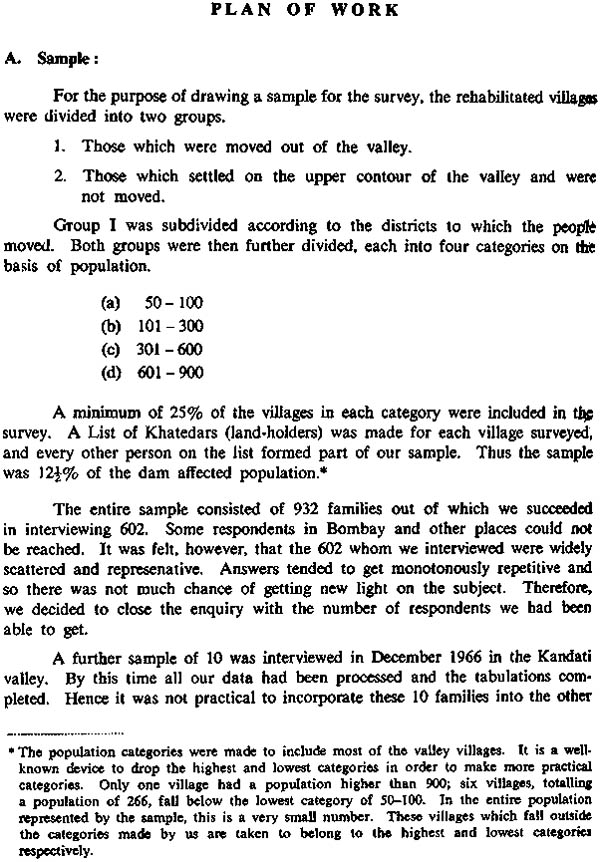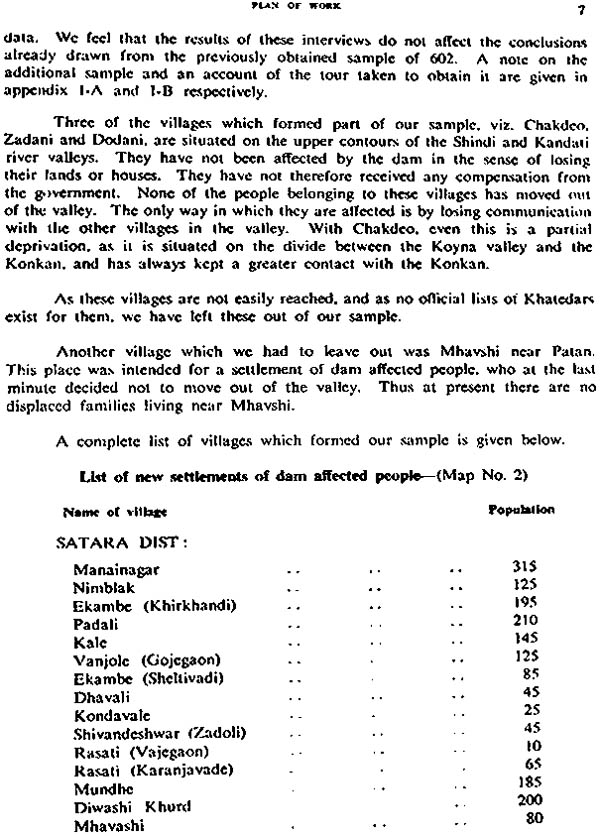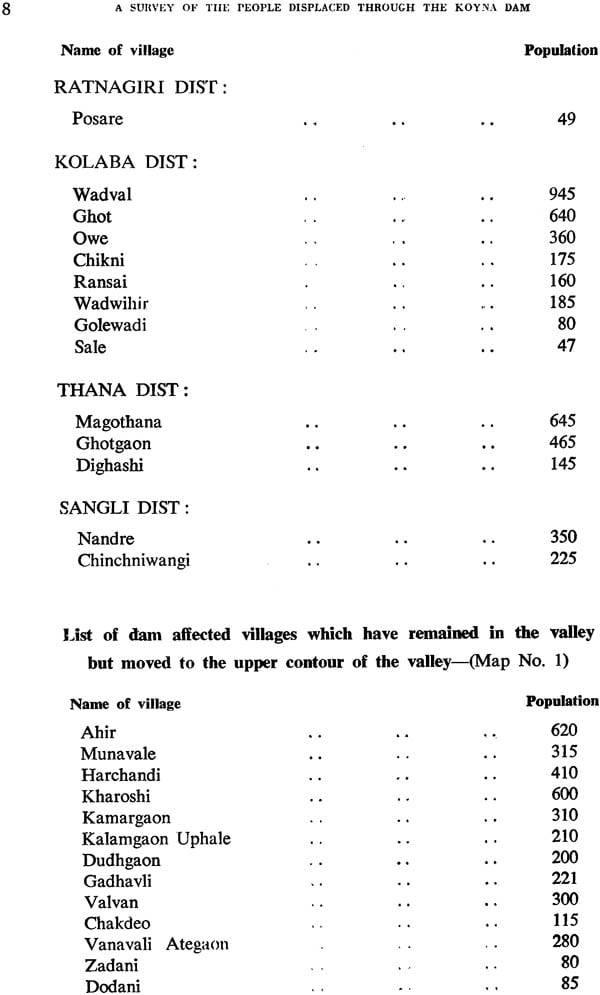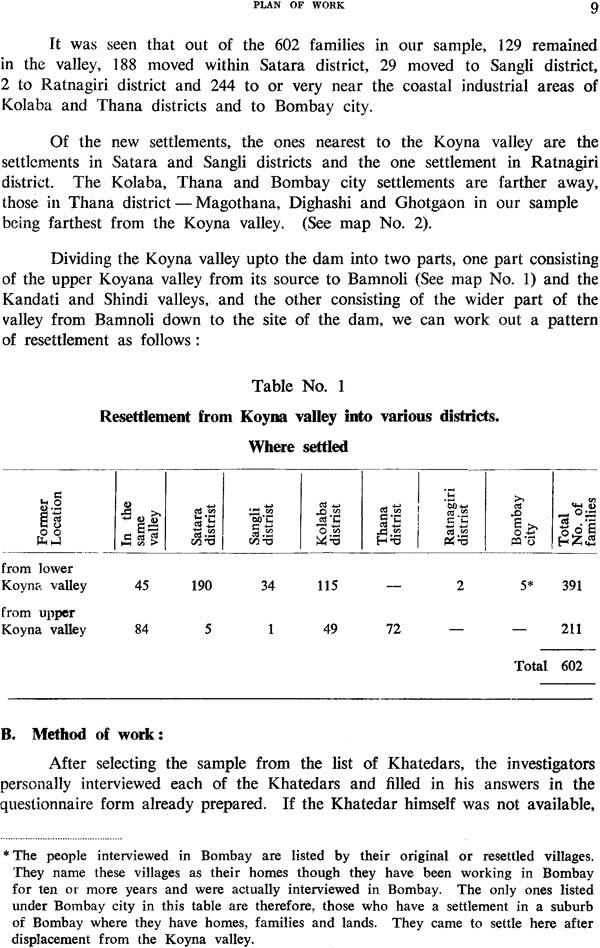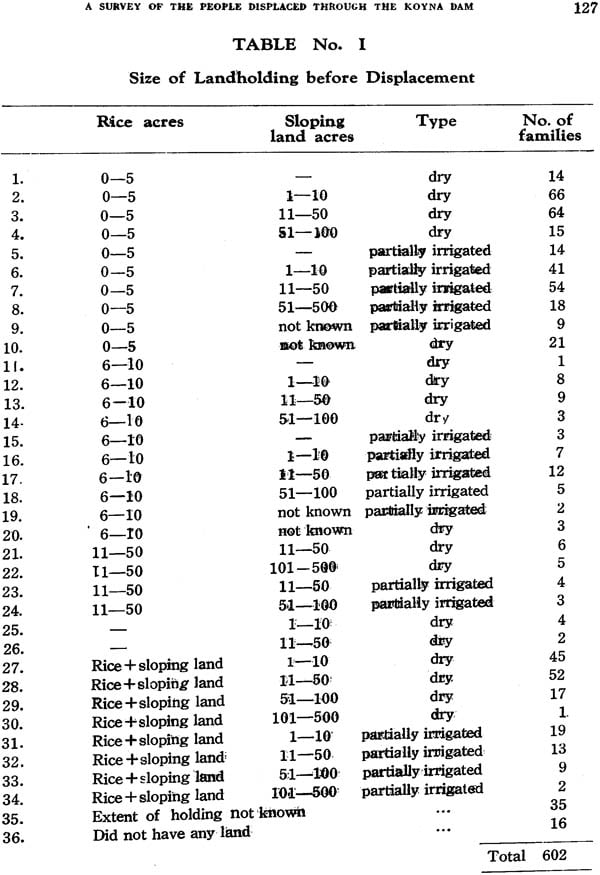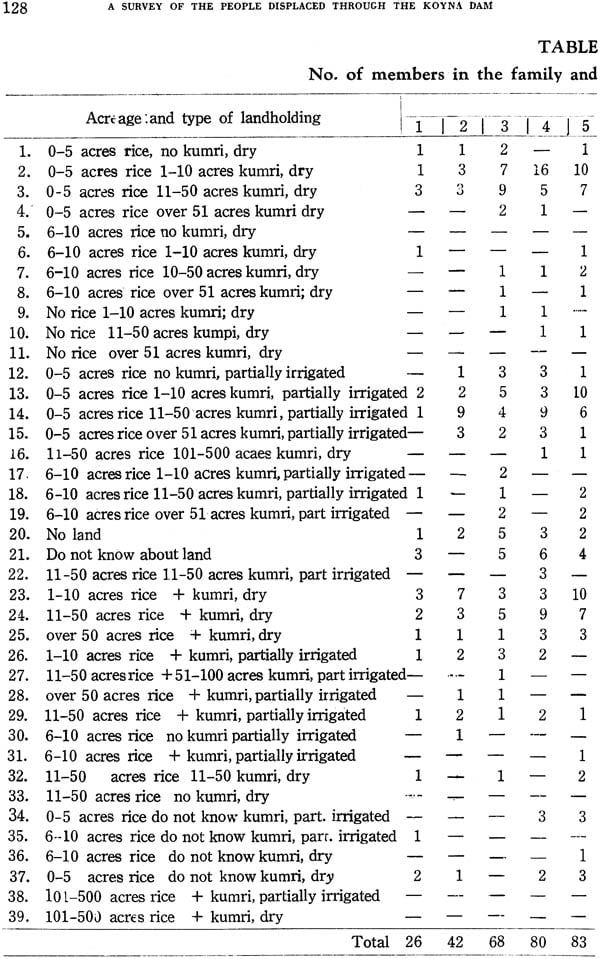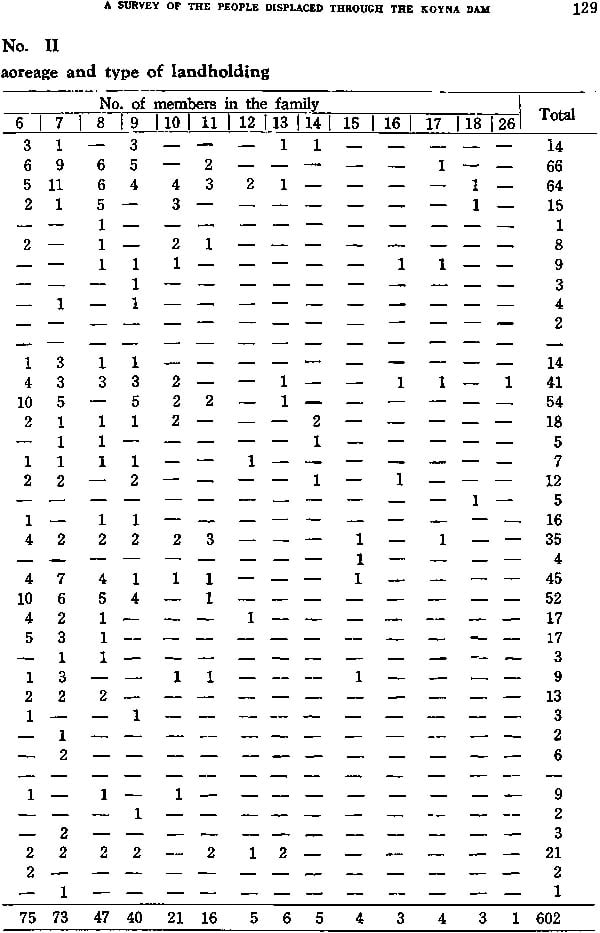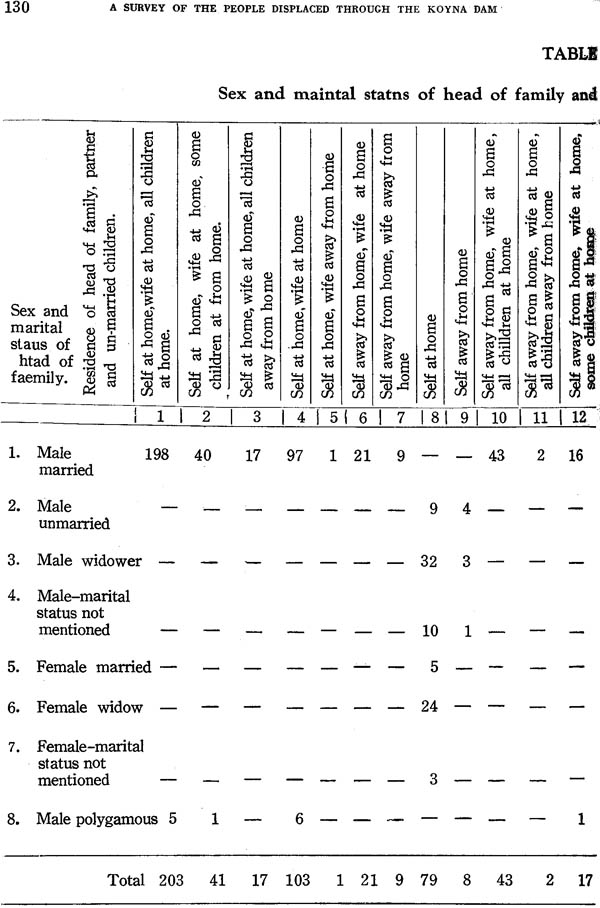
A Survey of The People Displaced Through The Koyna Dam (An Old and Rare Book)
Book Specification
| Item Code: | NAL894 |
| Author: | Dr. Mrs Irawati Karve |
| Publisher: | Deccan College Postgraduate and Research Institute |
| Language: | English |
| Edition: | 1969 |
| Pages: | 177 |
| Cover: | Paperback |
| Other Details | 10.0 inch X 7.0 inch |
| Weight | 290 gm |
Book Description
On the 15th of October 1964 the Deccan College celebrates the centenary of its main Building, and curiously enough this period coincides with the Silver Jubilee of the Postgraduate and Research Institute which, as successor to the Deccan College, started functioning from 17th August 1939 when members of the teaching faculty reported for duty. When I suggested to members o our faculty the novel idea that the centenary should be celebrated by the publication of a hundred monographs representing the research carried on under the auspices of the Deccan College in its several departments they readily accepted the suggestion. These contributions are from present and past faculty members and research scholars of the Deccan College, giving a cross-section of the manifold research that it has sponsored during the past twenty-five years. Forms small beginnings in 1939 the Deccan College has now grown into a well developed and developing Research Institute and becomes a national centre in so far as Linguistics, Archaeology and Ancient Indian History, and Anthropology and Sociology are concerned. Its international status is attested by the location of the Indian Institute of German Studies (Jointly sponsored by Deccan College and the Goethe Institute of Munich), the American Institute of Indian Studies and a Branch of Ecole Francaised’ Extreme-Orient in the campus of the Deccan College. The century of monographs not only symbolises the centenary of the original building and the silver jubilee of the Research Institute, but also the new spirit of critical enquiry and the promise of more to come.
The investigation of the people affected by the Koyna dam was undertaken on behalf to the Research Committee of the Planning Commission. The work was stared in July 1965 and finished in January 1967. The investigative work was done by Mrs. Jai Nimbkar under the guidance of Dr. Mrs. Irawati Karve, head of the Department of Sociology and Anthropology, Deccan College, Poona.
We would like to thank Dr. S. M. Katre the Director of the Deccan College for making this study possible. Our thanks are also due to Shri Prabhu Ajgaonkar of the Linguistics Department for his Statistical help and advice; to the Koyna Project Department of Rehabiltation; to Mrs. Sumati kirtane and Mrs. Leela Navathe for assistance in collecting and processing the data; and to the various officials connected with the Koyna dam project, other government departments and the Satara Zilla Parishad for the unstinting help and cooperation given to us in the collection of our data.
Displacement of people due to the building of dams is a world-wide problem. Generally the property-land and houses-lost by the people is evaluated and a cash compensation paid. This was what was done when the Mulshi dam in Maharashtra was built. The compensations paid were adequate but the people were left to shift for themselves. There has been no follow-up of the displaced people but in the few know cases no substitute land was bought with the compensation money. The money was eaten through and when it was all spent the people were worse off than they had been before the construction of the dam. Since independence the government has thought that it was not enough merely to pay compensation and that the government had to assume some responsibility for the rehabilitation of people rendered landless and homeless by such projects.
The Koyna dam is the first big project in Maharashtra in which the Government has assumed such a responsibility by offering substitute lands and housing plots, paying for transport etc. The extent of the responsibility assumed by the government is expressed clearly in the following : “the problem to be solved is primarily that of rehabilitation and not one of general betterment of the community as a whole. The general socio-economic betterment of the people is a nation-wide problem and cannot be linked with the problems of rehabilitation. In rehabilitation an attempt is made as far as possible and practicable to give the affected people some facilities and means of livelihood approximating to those they had in their original villages but, of course, with suitable improvement in hygienic and other living conditions in keeping with the present rate of advancement.”
Taking into account this background, we undertook the present study with the following four objectives.
1. To see how far the Government has carried out active rehabilitation, how far it has failed or succeeded and why.
2. To see how far fast people adapt successfully to a change in their way of life.
3. To see how the cash paid to the people was utilized. Large amounts of money-possibly more than the people had ever handled-was paid to them. Can one say that any constructive use was made of this money towards building a new life?
4. To see whether the funds utilized for this purpose, the time taken for rehabilitation. The personnel and the establishment created for the work could not have used positively for the betterment of the displaced people.
We think that apart from the theoretical interest of the study change in human society induced through deprivation of land for public utilities, an investigation of this sort should be of practical use to the Government in future projects of this type, revealing some of the failures of this project as far as rehabilitation of displaced people is concerned.
Most of the preliminary information for this investigation was obtained from the department of rehabilitation of the Koyna project. We would like to mention here in passing that all the officials we dealt with were extremely helpful, and there was no attempt, on their part, to hide or glass over anything or to hamper us in any way.
According to official statistics, a total of 100 village was affected, involving a population of about 30000. A total of 30000 acres of land was submerged, only 4500 acres out of this was paddy land, 4500 acres were under annual crops and 21000 acres were under ‘kumri’ or shifting cultivation, which means the land was cultivated only once in five or six years. In addition to this, 32000 acres of land was acquired. This was not actually submerged but belonged to people who had moved out the valley and could no longer cultivate it.
| (II) | A List of dam affected villages in the Koyna Valley as shown in Map No. 1. | |
| (III) | Map No. 2 : Resettlement pattern of the people removed from the Koyna Valley. | |
| (IV) | Name of the resettlements. | |
| (I) | Preface | |
| (II) | Foreword | |
| (III) | Schedule of work | 1 |
| (IV) | Introduction | 4 |
| (V) | Plan of Work | 6 |
| (VI) | Report of findings (pp. 14-105) | |
| Land | 14 | |
| Castewise distribution of sample | 25 | |
| 3 | Family in the Koyna Valley | 28 |
| 4 | Education | 40 |
| 5 | Occupation | 50 |
| 6 | Housing | 58 |
| 7 | Other amounts Received in Compensation | 65 |
| 8 | Amenities Provided to New Settlements | 75 |
| 9 | Religious and social Life as affected by Displacement | 84 |
| 10 | Opinions of Displaced People Regarding Their Own Adjustment | 91 |
| Conclusion | 106 | |
| Appendix I - A - An account of a trip to parts of Koyna and Kandati Valleys | 109 | |
| Appendix I - B - A Note on the Findings of the interviews with the people of Valvan Village | 113 | |
| Appendix II - Questionnaire | 116 | |
| Appendix III - General Tables | 127 |
